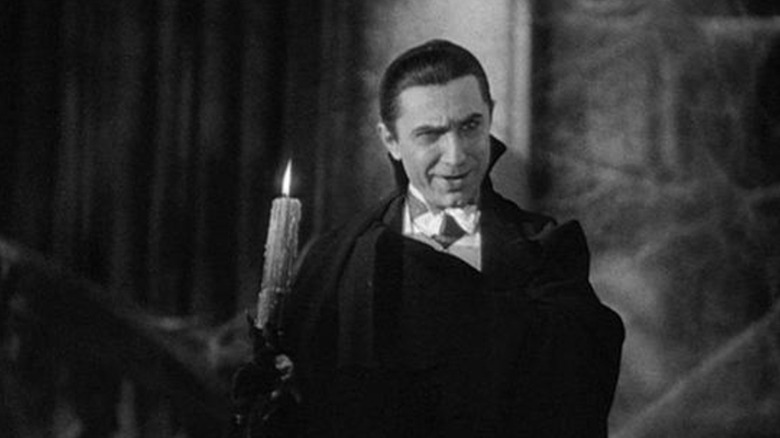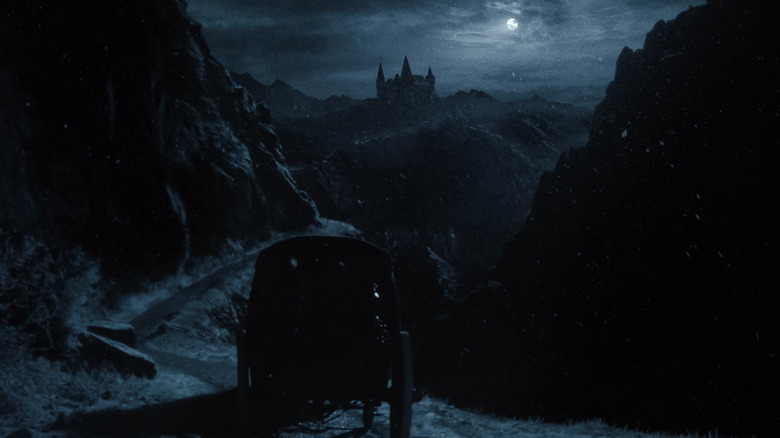Focus Features
By 2024, the idea of vampires existing in our storytelling world is a given. For over a century, narratives of these bloodthirsty creatures have permeated almost every form of media. However, when it comes to one of the most iconic vampires of all – Dracula – it seems we might need to put in a little more effort to keep him relevant in the current landscape.
It’s not that Dracula’s appeal is diminishing, but rather the films about him that seem to be losing their touch. Since first gracing the silver screen in 1921’s “Dracula’s Death”, there hasn’t been a decade without some portrayal of the Count making its way to theaters. This constant presence might explain why Dracula has taken on so many forms over the years. Like any enduring character, Dracula thrives on change. But there comes a point when change can become overwhelming. Recent films featuring the Count haven’t resonated with critics, fans or box office numbers, perhaps because they’ve distorted Dracula’s character to the point where he barely resembles the vampire we’ve come to know.
Enter “Nosferatu”, this month’s offering from writer-director Robert Eggers. At first glance, it appears to be another drastic reinterpretation of Dracula – this time as Count Orlok, the moniker used in Henrik Galeen and F. W. Murnau’s unauthorized 1922 adaptation of Bram Stoker’s novel. However, Eggers’ film does not seek to distance itself from previous Draculas. Instead, it fully embraces the character and his rich history, potentially making it the definitive Dracula movie.
The Universal Dracula’s Struggles

Universal Pictures
Dracula’s recent cinematic struggles seem to be tied to his association with Universal Pictures. Despite not owning exclusive rights to the character, the studio has arguably shaped our understanding of Dracula through Bela Lugosi’s immortal 1931 portrayal. Universal has made significant efforts to keep its Dracula relevant, even licensing Hammer Films’ 1958 “Dracula” for international distribution. However, after both the Universal Monsters and Hammer cycles ended, Universal’s attempts to revive the character have been less successful.
The 1980s saw vampires evolve into a more postmodern form, leaving Dracula feeling out of touch and teen-oriented (most notably in 1987’s “The Monster Squad”). He underwent a mature transformation in the ’90s with 1992’s “Bram Stoker’s Dracula”, but it was distributed by Columbia, not Universal. As Miramax and New Line Cinema brought a modern, hip Dracula to the “Dracula 2000” and “Blade” franchises, Universal tried to revitalize their Dracula with 2004’s “Van Helsing”, marking the start of their struggles with the character. Despite Dracula’s continued presence in cinemas, Universal didn’t make another attempt until 2014’s “Dracula Untold”, a film that would have launched their “Dark Universe” franchise if it hadn’t underperformed.
After the fall of the “Dark Universe”, Universal didn’t try to resurrect Dracula until 2023 with “Renfield” and “The Last Voyage of the Demeter”. Both films took drastically different approaches to the character; Nicolas Cage’s Dracula in “Renfield” was a dangerous boss/abusive boyfriend with fangs, while Javier Botet’s Dracula in “Demeter” was a mostly beast-like creature preying on others. Neither the R-rated comedy Dracula nor the gritty monster Dracula resonated with audiences, leading to this year’s “Abigail” – initially pitched as a take on “Dracula’s Daughter” – trying to distance itself from the character’s name and legacy.
Eggers Honors Everything from Browning to Hammer to Coppola

Focus Features
Eggers’ “Nosferatu” might finally give Universal the last laugh, as the film is distributed by their division, Focus Features. Instead of trying to subvert or completely reinvent Dracula, Eggers and actor Bill Skarsgård have opted to make Count Orlok the quintessential Dracula. That’s not to suggest that the film or Orlok’s portrayal is just an homage or reference; Eggers is too creative an artist for such simplicity. Instead, he’s done with “Nosferatu” what he’s done in his previous films “The Witch”, “The Lighthouse” and “The Northman” – take elements from a range of historical and pre-existing sources and blend them into a fresh cinematic concoction.
For “Nosferatu”, these sources include Stoker’s novel, various vampire legends, the actual Transylvania, and of course, the major cinematic “Dracula” features from the past century. The film showcases the icy bleakness of Murnau, the Gothic majesty of Browning, the Grand Guignol of Hammer, the extravagant madness of Badham, the introspection of Herzog, and the sensuality and theatricality of Coppola. Besides drawing from the character’s cinematic history, Eggers and Skarsgård make Orlok an intriguingly ambiguous figure, incorporating as many aspects of Dracula as possible into his portrayal. He’s a grounded individual with his own needs and wants, but also a supernatural being with terrifying power and influence. He’s both relatable and detestable, a blend that makes for an incredibly captivating character.
Importantly, “Nosferatu” doesn’t attempt to subvert Dracula or his mythos. The film has its own unique mythology about Orlok’s methods and how he can be defeated, but it never feels like Eggers is trying to justify an outdated lore. That’s because “Nosferatu” is driven by a genuine desire to explore its characters and themes, rather than making fun of, subverting, or launching a new franchise from Dracula. It’s a sincere, creative interpretation, and as it turns out, that’s all that was needed to make Dracula truly terrifying again.
“Nosferatu” is now playing in theaters everywhere.
Credit: www.slashfilm.com


